In the Wake of Hurricane Harvey, Houston EPA Lab Set to Close
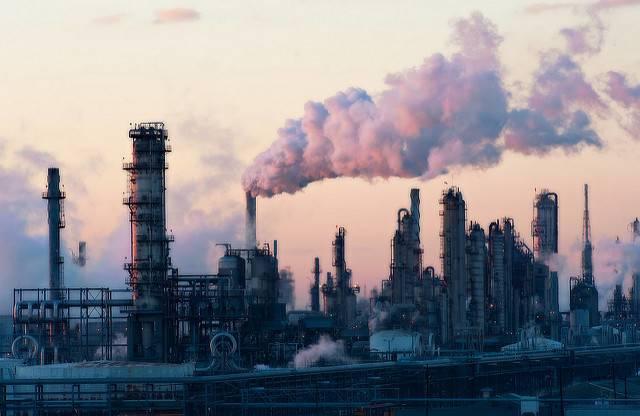

Despite the oil spills and threats of leaked chemicals across the Houston region due to flooding during and after Hurricane Harvey, a local Environmental Protection Agency (EPA) laboratory is targeted for closure.
According to the San Antonio Express-News, officials of a union representing some EPA employees in Houston said they were told that the 41,000 square-foot lab could be shuttered by 2020. The Region 6 Environmental Services Laboratory, which serves Texas and four adjacent states, devotes most of its work to testing water and soil samples from Superfund fund sites across the region.
The lab will not outright close either due to budget cuts or as part of the Trump Administration’s goal to eviscerate the agency. Rather, the facility’s lease is up for renewal in 2020 and the EPA has simply decided it no longer needs the space. Reporter Bill Lambrecht said 12 employees have already been offered buyout packages; to date three of them have accepted.
If the Houston lab closes, then the only options are to arrange for the samples to be tested by independent contractors, or to send them to the next closest lab, which is about 400 miles away in Ada, Oklahoma.
That decision has not gone over well with local EPA employees. In addition, other organizations have also singled out the closure for criticism, noting that the lab would close even though the post-hurricane recovery effort would still not be completed until well after the end of this decade.
“Scott Pruitt and Donald Trump are trying to close down the offices that exist to protect us by testing water and soil samples,” said Sierra Club Lone Star Chapter Director Reggie James in a public statement. “Since Pruitt and Trump can’t defend their climate denial in the face of a climate-fueled disaster, they’re trying to shutter the very offices that serve to protect Texans from future environmental and climate disasters.”
The Sierra Club also noted that 13 Superfund sites had flooded during Hurricane Harvey. The local EPA lab reportedly took oil and water samples from several of those locations after many of them were flooded.
In an email to Lambrecht, David Gray, an acting deputy regional administrator for the EPA, confirmed that that the Houston lab’s lease will not be renewed, but he denied the union's claim that the lab was slated for a complete shutdown. Without going into specifics, he explained to Lambrecht in an email, “We are looking at alternatives that will continue to provide the analytical services to support our mission critical work in the Dallas office.”
To be fair, the EPA operates 37 labs across the U.S., and the Government Accountability Office (GAO) has long suggested that some of the facilities could be consolidated. And during the waning days of the Obama Administration, the EPA agreed a reorganization was needed.
But the wisdom of closing a lab located in the epicenter of America’s energy and petrochemical sectors merits a closer look – especially in the wake of one of the more destructive weather events to hit the U.S. in recent years. News reports have also confirmed high levels of chemicals in the air around Houston – though critics say the EPA downplayed those pollution levels.
Image credit: Louis Vest/Flickr
Will New Scientific Breakthroughs Pave the Way for More Climate-Related Lawsuits?
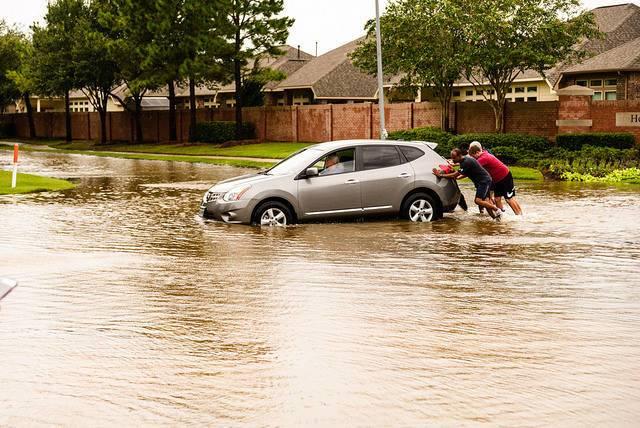

By Elliott Negin
A version of this article was originally published on HuffPost
What can you do when the president of the United States says climate change is a hoax and Congress is gridlocked by fossil fuel industry-funded climate science deniers?
Look to the courts for redress — with a major assist from science.
Using sophisticated computer analyses, scientists can now determine what percentage of an extreme weather event can be attributed to climate change. This emerging field of “climate attribution” science offers courts a powerful new tool for apportioning responsibility in cases brought by victims of extreme weather events — Hurricane Harvey comes to mind — or other climate-induced damages, such as sea level rise, against municipalities and private real estate developers for failing to protect them from foreseeable damages.
Likewise, companies responsible for producing and marketing fossil fuels — BP, Chevron, ExxonMobil and the like — may find themselves in legal crosshairs thanks to a first-of-its-kind study definitively linking global climate changes to carbon emissions directly associated with them.
Published earlier this month in the journal Climatic Change, the study calculated the amount of sea level rise and global temperature increase resulting from carbon dioxide and methane emissions from products marketed by the largest coal, gas and oil producers and cement manufacturers as well as their extraction and production processes.
“We’ve known for a long time that fossil fuels are the largest contributor to climate change,” said Brenda Ekwurzel, lead author and climate science director at the Union of Concerned Scientists (UCS). “What’s new here is that we’ve verified just how much specific companies’ products have caused the Earth to warm and the seas to rise.”
Ekwurzel’s study builds on a groundbreaking study one of her co-authors, geographer Richard Heede, published in Climatic Change in 2014. Closely tracking the oil, gas and coal extracted since the Industrial Revolution, Heede found that just 90 private and state-owned companies are responsible for two-thirds of human-caused carbon emissions since then. What’s more, Heede’s research showed that more than half of these carbon emissions occurred since 1988, when NASA scientist James Hansen sounded the alarm about climate change in well-publicized congressional testimony.
Ekwurzel et al.’s study quantified climate change impacts of each company’s carbon and methane emissions during two time periods: from 1880 to 2010 and from 1980 to 2010, because internal industry documents show fossil fuel companies were well aware of the threat posed by global warming at least 25 years ago.
According to the new study, emissions traced to the 90 largest carbon producers contributed approximately 57 percent of the upsurge in atmospheric carbon dioxide, nearly 50 percent of the increase in global average temperatures, and about 30 percent of global sea level rise since 1880.
Meanwhile, emissions attributed to just the 50 investor-owned carbon producers, including BP, Chevron, ConocoPhillips, ExxonMobil, Peabody and Shell, were responsible for roughly 16 percent of the global average temperature increase and around 11 percent of the global sea level rise from 1880 to 2010. Between 1980 and 2010, the same 50 companies contributed approximately 10 percent of the global average temperature increase and about 4 percent of the sea level rise.
State-owned companies also have played a significant role. Emissions linked to 31 majority state-owned companies, including Coal India, Russia’s Gazprom, Kuwait Petroleum, Mexico’s Pemex, Petroleos de Venezuela, National Iranian Oil Company and Saudi Aramco, were responsible for about 15 percent of the global temperature increase and approximately 7 percent of sea level rise from 1880 to 2010.
“Until a decade or two ago, no corporation could be held accountable for the consequences of their products’ emissions because we simply didn’t know enough about what their impacts were,” explained Myles Allen, a study co-author and professor of geosystem science at the University of Oxford in England. “Our study provides a framework for linking fossil fuel companies’ product-related emissions to a range of impacts, including increases in ocean acidification and deaths caused by heat waves, wildfires, and other extreme weather-related events. We hope the results of this study will inform the debate over how best to hold major carbon producers accountable for their contributions to the problem.”
As climate change impacts worsen and become more expensive to address, the question of financial responsibility will become more urgent. In New York City alone, local officials estimate that it will cost more than $19 billion to adapt to climate change. Globally, adaptation cost projections are equally astronomical. The U.N. Environment Programme calculates that developing countries will require $140 billion to $300 billion per year in 2030 and a whopping $280 billion to $500 billion per year by 2050.
“Fossil fuel companies could have taken any number of steps to address climate change, such as investing in clean energy or carbon capture and storage,” said Peter Frumhoff, a study co-author and director of science and policy at UCS. “Instead, many of them spent millions of dollars to try to deceive the public about climate science and block sensible limits on carbon emissions. Taxpayers alone, especially those living in vulnerable coastal communities, shouldn’t have to bear all the costs of these companies’ irresponsible decisions.”
Pending lawsuits by three California coastal communities could benefit immediately from Ekwurzel et al.’s findings. San Mateo and Marin counties and Imperial Beach, a city in San Diego County, filed complaints in July against 37 major coal, oil and gas companies, including BP, Chevron, ExxonMobil and Shell, claiming higher sea levels triggered by their products is putting billions of dollars of property at risk. The study also may embolden other municipalities and states to take similar legal action in the absence of leadership from the Trump administration and Congress. It then will be up to the courts to do what too many of our elected officials have so far failed to do: acknowledge scientific reality.
Elliott Negin is a senior writer at the Union of Concerned Scientists.
Walmart Boasts About ‘Natural Light’ at New HQ, But Overlooks Better Transport Options


There is no disputing the leading role Walmart has had in making the global retail sector far more responsible, efficient and sustainable. The company’s transformation dates back to Hurricane Katrina, when many of its employees stepped up with disaster recovery assistance during the storm; then-CEO Lee Scott soon convinced the company to start several initiatives to mitigate the company’s environmental footprint, including sustainable supply chain and renewable energy projects.
The company still attracts its share of critics who criticize its impact on everything from urban planning to low wages. Nevertheless, Walmart is a leading case study on how a company can become more sustainable without sacrificing profits.
But when it comes to its new headquarters, Walmart is following the lead of other companies such as Apple and Amazon – and not necessarily in a positive way.
True, Walmart’s employees need a new place to call home in Bentonville, Arkansas. The company’s “Home Office” dates back to 1971, when Walmart was far from visible in Kmart’s rearview mirror and many people in the country still had never heard of the low-priced retailer. Now Kmart is an afterthought and Walmart has become one of the world’s most recognizable companies. But dim spaces, a maze of offices that make little sense and parking that can be quite the hike for Walmart’s employees and visitors “do not reflect Walmart’s position as the world’s largest retailer,” as one Walmart vendor explained to me in a recent email.
The company had long been rumored to be revamping HQ as it gobbled up land around J and Eight Streets – warehouses, single-family homes and even a former day care center count amongst the real estate acquisitions.
Walmart CEO Doug McMillon confirmed those whispers with last week’s announcement that a new headquarters will arise in Bentonville about two miles away from the company’s current hub. McMillon has promised fitness centers, better meal services, easy access to trails (for those who walk or cycle) and hinted about green building design that would provide “natural light.” As McMillon boasted:
“The combined changes will help us get the most out of our existing team, while helping us attract high-quality talent in the future. I can assure you the project will be true to our roots, supporting a culture of servant leadership, which puts customers and associates first, and maintaining our commitment to fiscal and environmental responsibility.”
There is one thing, missing however: better public transportation options. True, Bentonville has a population of 47,000, but that is double the number of people who lived there in 2000. True, many of its employees live in Fayetteville, as they prefer the lifestyle in that nearby college town, a 20- to 30-minute commute from Bentonville.
But that does not mean Walmart could not try. A company long admired for leaving the competition in the dust from having a far more efficient trucking system than its competitors could leverage its influence and work with local communities to improve transportation options. Such a life would not only benefit Walmart’s employees, but for its partners that have offices in the region as well as for all who live in the community. A company such as Walmart that has long embraced technology also can consider options such as Chariot, the commuting service that harnesses smartphone technology to develop the most efficient commuting routes in real time.
More forward thinking about its future headquarters would position Walmart as more than just a jobs creator: it would show that the company is truly anticipating the needs of its employees, while proving to local leaders that it is taking ownership for the traffic and land development that accompanies such growth. Furthermore, the evolution of “smart cities” will change the nature of how retailers interact with its clients. Experimenting with 21st-century transportation technologies could provide Walmart new ideas that would give it yet another leg up on the competition.
Image credit: Brad Holt/Flickr
Sustainable Brands to present 70+ brand and sustainability experts at SB'17 Copenhagen conference


Speakers from H&M, IDEO, Forum for the Future, TerraCycle, Harvard University, and many more will present insights at SB’17 Copenhagen, a conference to be held 30 October 30 – 1 Nov in Denmark. The conference theme is “Redefining the Good Life,” and it will focus on how shifting consumer demands around the world are changing the 21st century economy.
The program includes sessions to learn about new tools, frameworks, and methodologies led by professionals from the World Bank, London School of Economics, Unilever, and other thought leaders. Breakout sessions on specific topics will be led by experts from the United Nations Global Compact, Sainsburys, SustainAbility, UPS, method + ecover, and more. The SB ’17 Copenhagen collaborative Activation Hub will present dynamic networking opportunities. And informal events such as coffee breaks and dinners will offer situations for making personal contact with thought leaders from around the world.
Members of the Ethical Performance community will receive 20% off their registration with code nw-cph17-EthicalPerformance so register today for maximum savings!
The event is sponsored by Sustainable Brands, the global community of business innovators who are shaping the future of commerce.
Deloitte’s RightStep Helps Kids Stay on the College Path


This post was sponsored by Deloitte as a part of a larger editorial package. It went through our normal editorial review process.
Countless studies have shown that individuals with a college degree will do much better financially over the course of their careers than those without. That’s good news for those who graduate college, especially as the degree will be required for the bulk of new jobs the U.S. economy will create in the coming years.
But it is mostly bad news for those from low-income families for whom college graduation rates remain low. Only 10 percent of those from the bottom income quartile (households with annual income less than $35,000) will complete a college degree by age 24, compared to 77 percent for those from the highest income quartile.
Given this disparity, young people from poorer families are likely to miss out on these opportunities and continue the cycle of poverty.
Closing this college-completion gap is the aim of Deloitte’s RightStep program, a set of initiatives based on the belief that more of these kids from low-income backgrounds could enter and finish college if only they were offered a guiding hand.
“Just given the dramatic impact that poverty has on students, the education component is really an area where if you apply certain resources, you can help these students stay on track from an academic, attendance and behavioral perspective. Then there’s no reason why they can’t succeed and go on to college,” according to Bill Copeland, who is a RightStep Education Champion and serves as a Deloitte LLP Vice Chairman.
Last year, RightStep reached more than 240,000 students across the U.S. by working with several innovative education-related nonprofits. Deloitte professionals volunteer as mentors, provide pro bono consulting, sit on a board, and sometimes contribute funding.
One such nonprofit is City Year, which places young Americorps volunteers in schools in low-income areas for a year. These volunteers work in the classroom alongside teachers to do specific interventions with at-risk students.
The goal is to “take kids that are dramatically off track and try to get them back on track,” said Copeland.
Deloitte serves as City Year’s National Strategy and Innovation Sponsor and provides pro-bono consulting to help build capacity for the organization, as well as support from Deloitte professionals for AmeriCorps members and staff through a mentorship program and career development workshops.
Strive for College is another organization that Deloitte supports. It provides an online college mentoring system that connects high school juniors and seniors with mentors who provide guidance through the college admissions and financial aid process. Students connect with mentors virtually through video chat, phone conversations, even text messaging.
Nearly 700 Deloitte professionals are now Strive volunteers. The program has had a dramatic impact on the students involved as over 90 percent of Strivers go on to four-year institutions, usually with low or no debt.
Deloitte also works with the Posse Foundation, an organization that identifies promising students from diverse urban backgrounds to become Posse Scholars. Students are selected based on personal qualities that can be overlooked by traditional college selection metrics, like standardized test scores. Instead, these kids are chosen for their strengths in other areas like leadership, motivation, teamwork, and communication skills.
Those selected for the scholarship form a team of ten, or a “posse,” and are provided with extra support to prepare them for college. Posse partner colleges and universities provide four-year, full-tuition scholarships.
“They are a big believer that everyone is capable of learning, so they look for talented students who maybe didn’t test well but have other strengths. They’ve learned that by making these students better leaders, they can be a very successful in college,” said Doug Marshall, managing director of Deloitte LLP’s Corporate Citizenship programs.
About 90 percent of Posse scholars complete a degree, an impressive achievement which even got a shout-out from former President Obama in an interview he gave on expanding college access for students from low-income backgrounds.
Posse now has chapters in ten U.S. cities. Deloitte professionals serve on the advisory board and staff the evaluation sessions where the students compete for a spot as a Posse Scholar. Deloitte also contributes funding and pro bono professional services.
Many Posse Scholars have gone on to work for Deloitte, and in total, Deloitte hires about 25 people a year who have been involved in one of the RightStep programs, according to Copeland.
Deloitte also kickstarted an innovative startup working on improving educational outcomes through its RightStep Innovation Prize. The prize awarded $100,000 in funding and $150,000 in pro bono consulting to help scale Reasoning Mind. This nonprofit has developed an interactive online math curriculum that allows students to work at their own pace to build basic math skills. Not only has the program improved scores on standardized math tests, but also improved students’ attitudes towards learning math, according to Reasoning Mind CEO Alex Khachatryan.
About 5,000 Deloitte professionals (out of 65,000 in the Deloitte U.S. firms) are now involved across the various RightStep initiatives. Marshall attributes this high level of engagement in part to their age, as a good portion of Deloitte’s workforce is hired right out of college.
Engaging in educational opportunities to give back is an important priority for professionals in this age range, according to Copeland, something Deloitte learned from its internal research.
“So, a big part of the business benefit for us is not only are we making an impact with students but we’re also engaging our people in a way that is important to them. They get an opportunity to work in this space and see directly the impact they have on students who are looking for support,” Marshall added.
Deloitte hopes to increase the number of its volunteers to the 10,000 range by introducing several new campaigns and making it easier for them to get involved.
As for the success of RightStep so far, it’s all down to “using our best asset which is our people,” concludes Copeland. “When you apply human capital, and add it where it really makes a difference with these students, attendance goes up, behavioral problems go down, and the kids’ confidence levels reach a point where they believe they can succeed. Then the impact is incredible.”
Image credit Deloitte
Why Does Long-Termism Matter?
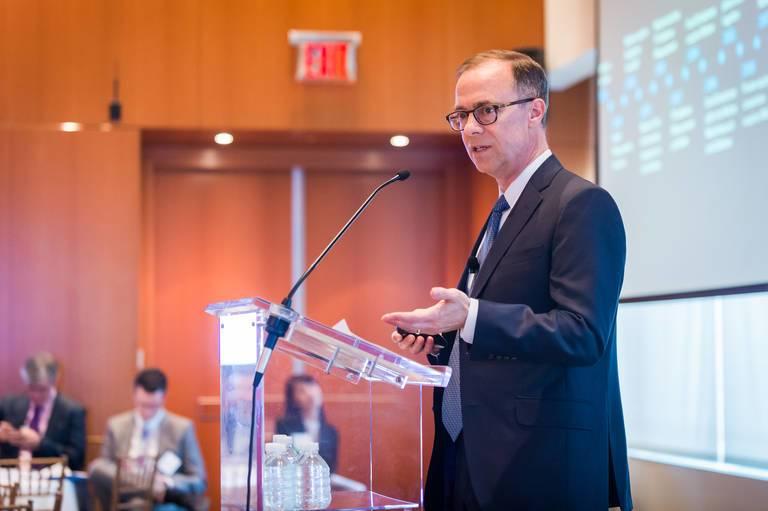

By Julia Wilson
If you were told tomorrow that half of your retirement savings wouldn’t be available to you in 40 years, would you still invest? What if the sound investment decisions you made today eventually collapsed under the collective weight of environmental, social, governance (ESG) factors like climate change and resource scarcity? Protecting ourselves against this possibility means investing today in sustainable solutions that expand the scope of what’s possible.
Let’s zero in on investors as one key stakeholder and influencer in this equation. Investors’ risk appetite and trust in a company’s leadership can have an impact on a business's ability to invest in a sustainable future. In other words, investors’ active and vocal interest in ESG considerations can propel companies to make long-term investments in sustainability that matter within and beyond the boardroom. When capital flows into companies that do well by doing good across people, planet and profit, we all benefit.
As a corporate responsibility and sustainability professional, I recognize the important role that investors play in helping companies open the door to new sustainability opportunities. There’s no shortage of ESG information out there for investors to tap into; when they recognize what’s relevant and ask the right questions, investors in particular are compelling advocates for sustainability.
So what does this focus on the future of our people, planet, and profits ultimately boil down to? Long-termism. We’ve seen an accelerated interest in the impact of long-termism on business and sustainability – inextricably linked as they are – through a number of different investor-focused efforts, like Larry Fink’s letter to BlackRock portfolio companies, the recommendations of the Task Force on Climate-related Financial Disclosures (TCFD), and Nasdaq’s voluntary ESG reporting guidelines for the Nordic and Baltic markets, to name a few examples of many.
One particularly compelling example of how companies and investors can communicate more directly with each other about the importance of ESG factors on long-term success is through CECP’s Strategic Investor Initiative. Nielsen's CEO, Mitch Barns, presented at the first CEO-Investor Forum in February 2017. Mitch’s presentation touched on a number of different aspects of Nielsen’s long-term strategy and story, focusing on how the history of our company has guided us through turbulent times, and how hard work and patience can lead to some of your greatest innovations.
Like a growing number of CEOs and other corporate leaders, Mitch also made the direct connection between our company’s most relevant areas of opportunity and risk—like data privacy, security and integrity; diversity representation and inclusion; and future-focused leadership and innovation—to our future growth and success.
Your ESG strategy is your business strategy. By linking business and sustainability strategies, companies demonstrate their true value for investors and beyond.
Plenty of time is devoted to how best to make the business case for sustainability. At conferences and seminars across the globe, sustainability professionals debate the merits of various approaches. Which executives within your C-suite will hold the most sway? Which arguments are most compelling – the financial bottom-line, reputational, or human interest? In reality, much of this depends on your company’s structure, industry, and the maturity of your sustainability efforts.
No doubt, sustainability is a team sport. A truly unified approach creates and supports a meaningful ESG strategy anchored in future goals and designed for long-term growth.
Long-termism is the critical link between the investment and sustainability communities. It is through this expanded – and connected – view of profitability and ESG success that companies truly win over the long-term.
Julia Wilson is Director of Global Responsibility & Sustainability at Nielsen.
Image credit: CECP
300 Global Companies Commit to Science-Based Climate Targets Ahead of Climate Week NYC
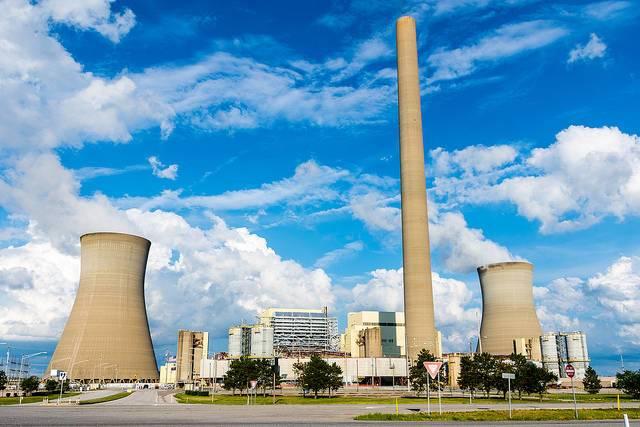

As the annual Climate Week NYC launches today, more companies are announcing their commitment to carbon emissions reduction targets.
And they are doing so through using the guidelines set by the Science Based Targets initiative, which provides a framework that its supporters say can help companies stay competitive while doing their part to mitigate climate change.
The number of companies committed to climate action while incorporating this initiative has roughly doubled from just over a year ago, when 155 companies had pledged to do what they could in order to limit the world’s temperature to less than a 2°C increase this century.
Companies now onboard include Adobe, Merck, Nike, United Technologies and the Spanish telecommunications giant Telefónica. At least 50 of the companies that have announced a science-based emissions reduction plan to date are headquartered in the U.S.
These companies join the likes of Mars Inc., which earlier this month it would invest $1 billion over the next several years on plans such as climate change mitigation and sustainable supply chain programs. The food conglomerate recently had its targets approved by a team of experts from this initiative. The apparel manufacturer and retailer H&M announced a long-term “climate positive” plan this spring and say it is committed to this global program. And both spinoffs of the former HP, Hewlett Packard Enterprise Company and HP Inc., have already set targets aligned with the Science Based Targets Initiative.
A study released earlier this year estimated that almost half of all Fortune 500 companies recognize climate change risks and have developed a plan for climate change mitigation or more aggressive clean energy adoption – just another way the business community is rebuking the current presidential administration. Many companies realize that nationwide climate change goals cannot occur without the private sector’s leadership; and in the U.S., many have continued their sustainable-business-as-usual plans despite the federal government’s decision to withdraw from the Paris Accords.
The Science Based Targets initiative is a partnership between NGOs including CDP, World Resources Institute (WRI), WWF and the United Nations Global Compact. Companies who decide to align with this program have two years to develop a science-based emissions reduction plan, which in turn are evaluated by the team of experts who work with this initiative. The initiative only approves such plans that meet strict criteria, which to date include 71 various targets. Furthermore, companies who decided to set these science-based targets must have a plan that not only reduces emissions within their own operations, but also across their entire value chains. The initiative is one of several programs that is affiliated with the international We Mean Business coalition.
According to the WRI, the companies that have so far aligned themselves with the Science Based Targets initiative comprise an estimated $6.5 trillion in market value – an amount roughly equal to the NASDAQ stock exchange or the combined GDPs of Germany and the United Kingdom. These companies also emit 750 million metric tons of CO2 emissions annually, comparable to 158 million cars driven for one year, says the WRI. The companies are from 35 countries and span a wide range of sectors including apparel, chemicals, consumer packaged goods, finance, hospitality, manufacturing and technology.
Image credit: Don Sniegowski/Flickr
Questions to Ask When Developing a Successful Renewable Energy Procurement Strategy
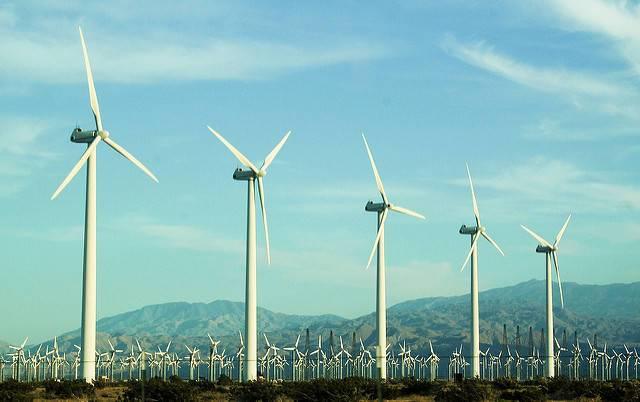

By Charles Benisch
To hedge against the risk of increases in short- and long-term energy prices on the market, businesses are increasingly integrating renewable energy and distributed energy resources (DER) into their broader energy procurement and management strategy.
However, the current state of the renewable energy market can make this challenging. Determining the appropriate resource mix (conventional power, RECs, wind, solar, battery storage, biofuel) and the most effective financing strategies (PPA, VPPA, PACE financing, cash outlay) can be complex and time-consuming.
Too often, organizations lacking an enterprise-wide energy procurement and energy management strategy end up relying on a single renewable energy or DER technology and can miss out on lower-cost or lower-risk opportunities.
While this market can be complex, large organizations are integrating renewables and DERs into their strategy without putting a strain on resources or dragging down productivity in the process. For example, earlier this year the U.S. General Services Administration completed a 140 MW wind power purchase agreement—the largest such purchase ever completed in a federal contract—after developing a renewable energy procurement strategy.
Despite the complexities, when developing a renewable energy strategy it’s helpful to ask similar questions as you would if you are managing procurement more broadly:
1. What are the goals of your renewable energy strategy?
When developing a renewable energy strategy, there are many important questions to consider. Is renewable energy an add-on, or the focus, of your procurement strategy? Is it important that you use generation from a specific resource? How about geography? For example, when Microsoft purchased wind power for its data center in Cheyenne, Wyo., procuring from local resources was an important consideration.
2. What is the value of budget certainty?
Different products carry different risks. For example, Virtual PPAs can become a liability when the market price of electricity falls below the fixed “strike price”—but when the price is above the strike level in the VPPA, they generate income. Changes in the value of the PPA due to market prices can have further impacts on financial statements under certain conditions. Use of risk management tools and hedge accounting can improve budget certainty and help circumvent mark-to-market impacts on your balance sheet, making a codified risk management strategy an important component of your renewable energy strategy.
3. What’s the premium you’d be willing to pay for region or resource-specific projects?
Before determining your renewable energy procurement strategy, you need to determine what premium you are willing to pay, if any. On top of that, region and/or resource-specific supply may come at an additional premium. Would you pay 10 percent extra for local wind? Having answers to these questions will influence the types of products you engage with.
4. Flexibility in contracting requirements (e.g. contract length)?
Typically contract length is the big lever but there are other factors to consider when evaluating a contract. Are there any capital requirements? What about counter-party risk? The more flexibility you have, and the more risk you are willing to assume, will be important factors that determine the details of your contract.
5. Does your load closely match wind or solar generation profiles?
For some business, the uncertain base load profile of wind and solar generation is not a big issue, but for many, certainty is key. If this is the case, then perhaps fuel cells or some mix of generation capacity is a better fit.
6. How much of your load is located in competitive markets?
Understanding the specific market dynamics you’re engaging with in relation to your business load profile is key to making the right choices.
7. Which internal stakeholders need to be engaged?
This is an extremely important question that many businesses fail to fully address when building a renewable energy strategy. Typically, when it comes to sustainability, there are important stakeholders across the organization. It’s not just procurement, of course. How about finance, and/or facility management? How is the C-level integrated into your strategy development plans?
In summary, there are a few basic things to keep in mind as you develop an integrated approach to renewable energy:
- On-site generation offsets your retail load
- Off-site purchasing through VPPAs exposes you to hourly market risk (but can be managed)
- There isn’t always perfect correlation between prices in different market areas
- There’s generally a tradeoff between budget certainty and cost savings
Charles Benisch is marketing manager for EnerNOC energy procurement and advisory services.
Canada's NAFTA Upgrade Calls for Improved Worker Rights in U.S. and Mexico


The old maxim, "be careful what you wish for" may well apply to the Trump administration's experience with NAFTA these days. For months, the U.S. has been calling for a renegotiation of the North America Free Trade Agreement, saying that the terms of the three-party contract don't meet U.S. needs and require an update.
So-called right-to-work
Well, President Trump is getting his wish. In August, Canada presented its top 10 list, which offer a laudable, and in some cases, hard-to-imagine wish list for the bargaining table. This month it added one more: Scrapping "right-to-work laws" in the U.S. and Mexico.
Canada says that labor standards need to be on the table, and that includes the U.S.' contentious "opt-out" laws when it comes to union membership. In some states, workers can opt-out of paying union dues, even though they benefit from union representation in negotiations and agreements. These laws are a sneaky way to erode worker rights by starving the unions financially.
And workers' rights and pay in Mexico should be on par with U.S. and Canada expectations, says Canada. Mexican workers hired by U.S. and Canadian companies under the current NAFTA agreement don't have to be paid the same rate or receive the same protection as those in the U.S. and Canada working for the same companies.
Some researchers draw a parallel between the emerging right-to-work laws of today and the labor standards that were eventually countered in the U.S. South (Jim Crow laws), where right-to-work laws helped to diminish access to jobs for African American and Jewish workers by giving more strength to the employer and fewer rights to the would-be worker.
But today, they are considered a legitimate right in states where right-to-work laws have been passed to give workers more choice over membership and access to jobs. They are also considered a threat to the union model, which survives on the idea of collective pay and representation.
Jerry Dias, who represents Canada's largest private-sector union, Unifor, said Canada is also calling for labor standards in Mexico to be a part of the discussions at the NAFTA table, including paid family leave provisions. Mexico is among a shrinking number of countries that don't provide paid leave options for workers due to medical and family needs.
According to Canada's Foreign Affairs Minister Chrystia Freeland, Canada wants a "progressive" agreement with the U.S. and Mexico, which does more than stake out benefits. Its key issues include, but aren't limited to: improving environmental standards with recognition of climate change issues, better indigenous protections, gender rights, across-the-board labor standards (that are applied in Mexico as well), more cross-border access for professional people and the big bugaboo: an end to the "buy American" rule.
The U.S. of course has a long wish list as well. Toward the top is the desire to have access to Canada's lucrative and exclusive dairy market. For years, Canada has kept tight controls on it and its poultry sector, limiting U.S. access to free trade.
Auto manufacturing
The U.S. rules of origin for auto parts and auto manufacturing are another area that will likely drag out negotiations. Changes to rules that determine the percentage of free-trade auto content that can cross borders is a sticking point that the Trump administration wants addressed.
Mexico, which is often portrayed in the media an embattled target of the Trump administration, has its own wish list as well, which includes having its open-energy market as part of the NAFTA agreements. Under President Pena Nieto's guidance, Mexico's energy sector has been changing and is now accepting some private foreign investment. The country is seeking "mechanisms that allow us to integrate ourselves in a positive way in the energy sector," explained Mexico's chief negotiator, Kenneth Smith Ramos, as those steps would help "reflect the reform Mexico established."
And Mexico's agricultural sector wants changes as well, with protections that assure that smaller fruit and vegetable growers aren't put out of business by large US- and Canada-owned companies and protections for its auto manufacturing industry.
It's a fair bet there will be a lot of give and take at the table in the coming months and that none of the participants will likely get all that it wants. Threats and counter-threats to walk away from negotiations have also made these NAFTA talks a more personal and publicized issue at home in each country.
Whether Canada truly expects the U.S. federal system to overwrite years of state laws in favor of right-to-work is doubtful, just as it is unlikely that the U.S. negotiators expect that the Canada would bend to a loosening of dairy import laws.
But in this day and age of contentious borders and trade boundaries, discussing a cross-border agreement that actually puts labor rights, corporate investment, gender rights, indigenous recognition, environmental protections, open energy expansion on the table is a major start. To that end, NAFTA 2017 may already have won some remarkable concessions.
Floridians: Now is Exactly the Time to Have That Discussion About Climate Change


By Susan Glickman
As a native Floridian, I chose to ride out Hurricane Irma in my hometown of Tampa — just a few miles north of where the Tampa Bay Buccaneers play football. Like millions of other Floridians who evacuated low-lying beach communities for higher ground, I had the obvious safety concerns and worries about whether I would even have a home to return to. But as a public interest advocate who has worked on climate and energy issues every day for almost two decades, I also have intense concerns about the growing climate change/hurricane nexus.
So when EPA Administrator Scott Pruitt says it's insensitive to Floridians and Texans to talk about climate change during hurricane emergencies, I say he missed the boat as to what's truly insensitive.
What's insensitive is not talking about the links between warmer surface-water temperatures and more-intense weather events. What's insensitive is dismantling the Clean Power Plan that was put in place to reduce climate-changing carbon pollution. What's insensitive is unraveling the environmental protections we all rely on so allies in the oil and gas industry can continue to pollute for free and have consumers pick up the tab.
Plain and simple, we are altering the climate of our planet for all living beings just so that a few people can make money selling, trading and producing fuels and products that emit greenhouse gas emissions. It's not okay and it's got to stop.
Increased greenhouse gas emissions are fueling more extreme weather events. It's just that simple. The warmer ocean temperatures in the Atlantic and the gulf are contributing to more intense hurricanes. Climate change is causing sea level rise that adds to the threat of coastal flooding.
We have needed to act to reduce emissions for a long time, but now we are at a true crossroads. The Arctic is melting, and the permafrost is thawing. As goes the Arctic, so goes Florida. We must take serious action now to both adapt to the climate change impacts that are inevitable from carbon pollution already in the pipeline and to reduce our emissions and future impacts by transforming to a low-carbon economy.
Make no mistake, we've known about the problem for a long time. In 1965, three weeks after his inauguration, President Lyndon Johnson said: "This generation has altered the composition of the atmosphere on a global scale through radioactive materials and a steady increase in carbon dioxide from the burning of fossil fuels." Johnson was responding to the first official governmental report on the possible challenges posed from increasing carbon dioxide (CO2) to dangerous levels.
Even before that, physicist Roger Revelle testified before Congress in 1956 about the relationship between fossil fuel combustion, rising CO2 in the atmosphere, and potentially increased hurricane risk in the Atlantic. So the potential impacts of climate change on hurricanes were known 60 years ago. This is not new news.
So why do so many people today still deny the causes of climate change despite the overwhelming evidence? Since I'm from the Sunshine State, I liken it to the intense rivalry between the University of Florida Gators and the Florida State Seminoles. You pick a team and stick with them through thick and thin. Football allegiances are powerful in Florida. There's no in between once you take sides.
Similarly, for climate deniers to embrace the largely accepted science they have to renounce their world view and their peers. And while it is difficult to stray from one's world view, more and more people now see reality staring them in the face.
So without pointing fingers or recrimination, I say that this is the moment we must all confront the realities of a changing climate and acknowledge there are solutions at hand. There is no shortage of data on climate science and, thankfully, there seems to be no shortage of technologies to achieve a low-carbon economy. Transitioning to a clean energy economy will be better for all of us all in the long run, creating jobs, saving money and protecting our natural environment.
Being in a hurricane — or in any crisis situation — does have a certain surreal quality to it. Across the globe we've been pummeled with so many recent cataclysmic events — earthquakes in Mexico, fires in the West, mudslides in Sierra Leone — and now the nearby devastation from Hurricane Harvey is fresh on our minds. Every day it's like we're watching a movie — an intriguing thriller — except this one is real. Climate change is happening and we're seeing it play out before our eyes. It would be insensitive to continue to ignore the signs and fail to take action.
Susan Glickman is the Florida director of Southern Alliance for Clean Energy.
This piece was originally published in the Tampa Bay Times